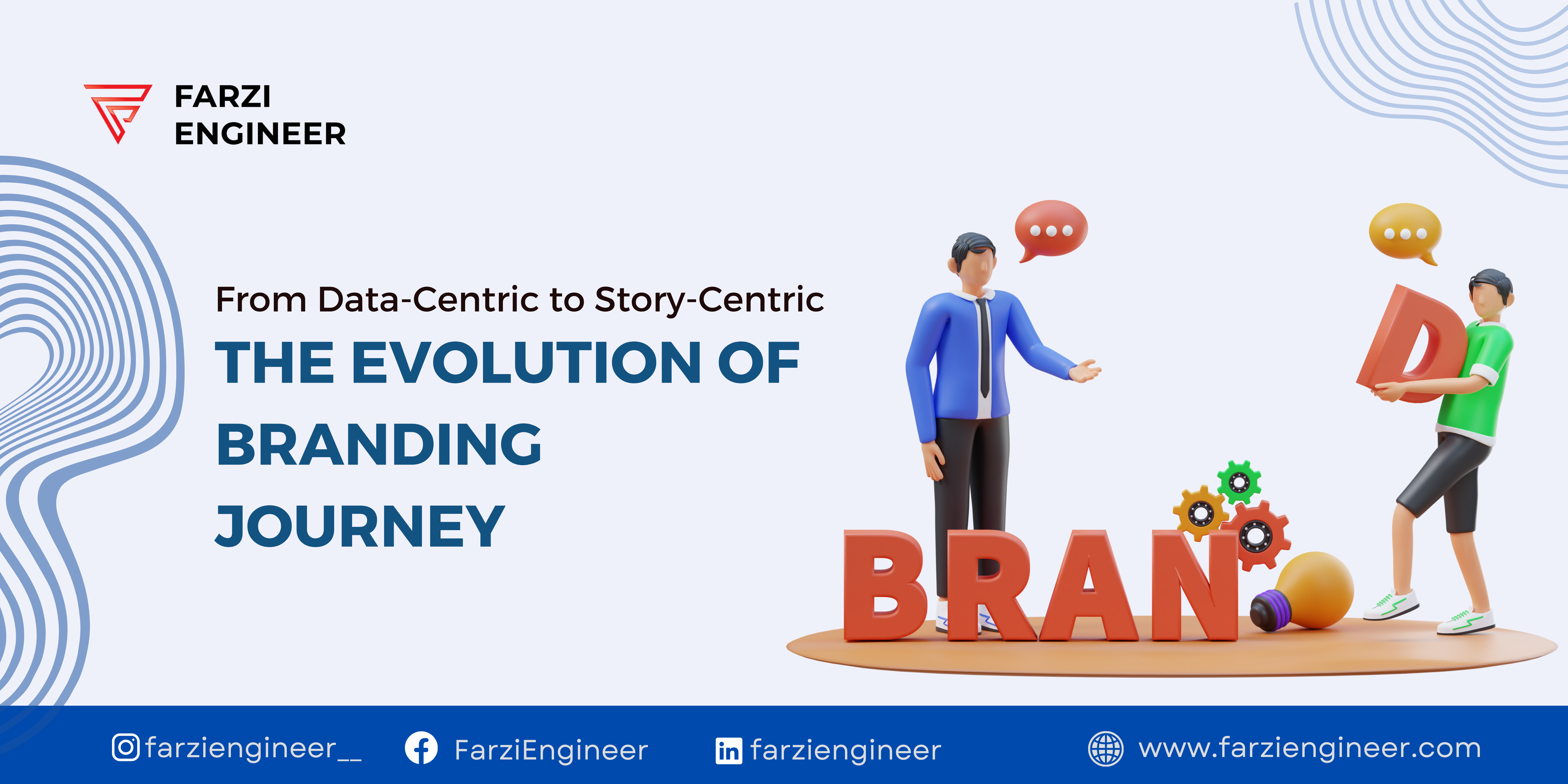In the world of business, change is constant, and so is the evolution of branding strategies. Arush Chopra, a name that resonates in the marketing sphere, embarked on a remarkable journey from being data-centric to story-centric. This transformation is a testament to the power of adaptation and innovation in branding.
At the heart of this evolution is Data Transformation. Arush Chopra recognized that while data is essential, it’s the story that truly captures hearts and minds. Hence, he embraced Narrative Branding as the catalyst for change. His brand’s story became a pivotal component, transcending mere facts and figures.
Brand storytelling became the cornerstone of Arush Chopra’s approach. Through compelling narratives, he connected with his audience on a deeper level, creating an emotional bond that went beyond products or services. This shift marked the Brand Evolution of Arush Chopra’s journey.
In this exploration, we delve into the phases, strategies, and results of this remarkable data transformation. Join us as we uncover the profound impact of moving from data-centric to story-centric branding, a brand evolution that redefined success in the marketing world.
Exploring Shift from Data-Centric Approaches
In recent years, there has been a noticeable shift in the way businesses approach their branding strategies. This shift is characterised by a transition from data-centric approaches to a more narrative branding and story-centric focus. This transformation, often referred to as Data Transformation, signifies a fundamental change in the way companies communicate their brand identities.
Traditionally, brands heavily relied on data-driven metrics to shape their messaging and positioning. However, in today’s fast-paced and highly competitive market, a purely data-centric approach falls short. Instead, companies are recognizing the power of Brand storytelling as a tool to engage and connect with their audiences on a deeper level.
This evolution in branding represents a broader trend in Brand Evolution. Companies are moving away from sterile data points and are now using brand storytelling to humanize their brands. By crafting compelling narratives, businesses can create emotional connections with their customers, fostering loyalty and trust.
The transition from data-centric to story-centric branding is a significant development in the world of marketing. It emphasises the importance of compelling narratives in conveying a brand’s values and vision, ultimately enabling businesses to establish stronger and more meaningful connections with their target audiences.
How Narrative Branding Techniques Transforms Brand?
The data transformation from a data-centric approach to a story-centric one has a profound impact on how brands communicate and connect with their audiences. Narrative Branding is at the core of this transformation.
In the era of Data Transformation, brands heavily relied on statistics, demographics, and market research to shape their image. However, this approach lacked emotional resonance. Enter Brand storytelling. This technique humanizes brands, making them relatable and engaging. By weaving narratives around their products or services, companies can capture the hearts and minds of consumers.
The essence of Brand Evolution lies in this shift. Brands are no longer just data points; they’re stories waiting to be told. Effective narrative branding create a connection with consumers, fostering loyalty. They allow brands to convey their values, mission, and purpose in a way that resonates deeply.
The adoption of narrative branding techniques transforms brands by infusing them with emotion and relatability. This shift from data-driven to story-driven branding is a testament to the power of brand storytelling in building lasting connections with customers.
Approach to Effective Brand Storytelling
The approach to effective brand storytelling is pivotal in the transition from data-centric to story-centric branding, symbolising the shift in Data Transformation. Successful Brand storytelling involves several key elements in this journey of Brand Evolution.
Firstly, it begins with understanding your target audience. Brands need to know who they’re speaking to and what resonates with them. This helps in tailoring narratives that genuinely connect with people.
Next, crafting a compelling narrative branding is crucial. The story should not only be engaging but also reflect the brand’s values and mission. It should evoke emotions and create a memorable experience.
Consistency plays a significant role. Effective storytelling should be woven consistently across all touchpoints, whether it’s a website, social media, or marketing materials.
Lastly, feedback and adaptation are essential. Brands should continuously evaluate how their narratives are received and be ready to adjust them based on audience response.
The approach to effective brand storytelling involves understanding the audience, crafting compelling and authentic narratives, maintaining consistency, and being open to adaptation. This approach ensures that brands successfully transition from data-centric to story-centric strategies in their branding journey.
Analysing the Stages of Brand Transformation
Analyzing the stages of brand transformation, particularly in the shift from data-centric to story-centric approaches, sheds light on the fascinating journey of Brand Evolution.
- Data-Centric Foundation: The journey often begins with data. Brands gather information on customer demographics, preferences, and market trends. This forms the data-centric foundation on which branding strategies are built.
- Recognition of Limitations: Over time, brands may realize the limitations of relying solely on data. They understand that while numbers provide insights, they don’t create emotional connections or inspire loyalty.
- Narrative Branding Introduction: This stage marks the introduction of Narrative Branding. Brands start to use stories, emotions, and experiences to convey their messages. They aim to connect with customers on a deeper level.
- Consistency and Adaptation: Maintaining consistency in brand storytelling across various channels becomes crucial. Brands also adapt their narratives based on customer feedback and changing market dynamics.
- Successful Story-Centric Branding: Ultimately, the transformation culminates in successful story-centric branding. Brands are no longer just names; they are stories that customers connect with emotionally, fostering trust, loyalty, and long-lasting relationships.
Measuring the Success of Arush Chopra Story-Centric Branding Journey
Measuring the success of Arush Chopra’s story-centric branding journey is a testament to the transformative power of his strategies. In a world once dominated by data-centric approaches, Arush ventured into uncharted territory, and the results speak volumes.
The shift began with Data Transformation. Arush didn’t discard data but used it as a foundation. His journey into Narrative Branding marked a significant turning point. The stories he told became the soul of his brand, transcending traditional marketing.
Success in this context hinges on a blend of metrics and emotions. While traditional data-driven KPIs (Key Performance Indicators) remained important, a new set emerged. Engagement levels soared as audiences connected with the brand’s stories on a personal level.
The key measure of success lies in the brand’s ability to resonate. Brand storytelling became a driving force, allowing Arush Chopra’s brand to forge lasting connections with customers. This emotional connection translated into increased loyalty, word-of-mouth marketing, and ultimately, growth.
In this story of Brand Evolution, success is measured not only in numbers but also in the impact felt by the audience. Arush Chopra’s journey exemplifies that, in the era of narrative branding, success is found in stories that move hearts and inspire loyalty.
Final Thoughts
In the grand tapestry of Arush Chopra’s branding journey, we find a compelling conclusion. The data transformation from data-centric to story-centric branding has been nothing short of a revelation.
The pivotal element in this evolution has been Data Transformation. Arush Chopra recognized the need to harness data’s power but also understood that data alone couldn’t create lasting connections. He skillfully embraced Narrative Branding as a bridge between raw information and compelling stories.
Brand storytelling emerged as the heart of his strategy. It was through these stories that Arush Chopra connected with his audience emotionally, elevating his brand beyond the mundane. The result? A profound Brand Evolution that reshaped not just his brand but also the way we perceive branding itself.
As we conclude this journey, we see the triumph of storytelling over statistics, of emotions over numbers. Arush Chopra’s branding journey teaches us that in today’s world, data must be transformed into stories that touch the soul. It’s a testament to the enduring power of narratives in the ever-evolving landscape of branding.





